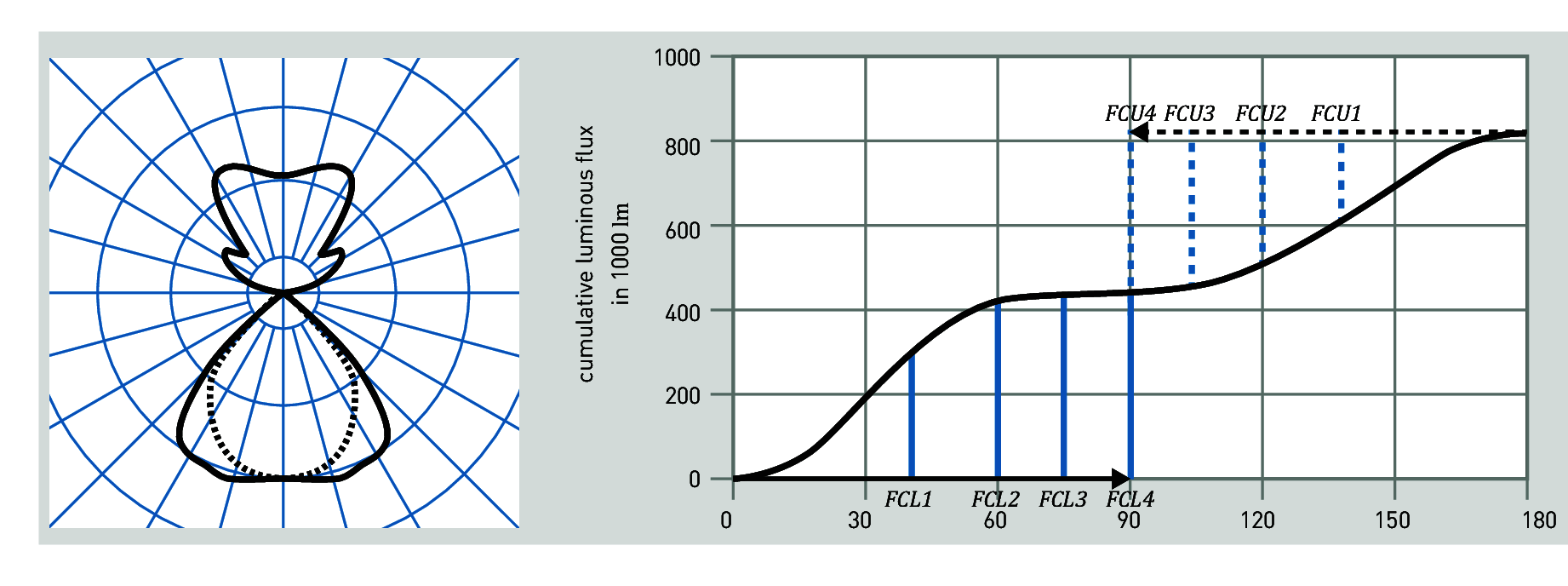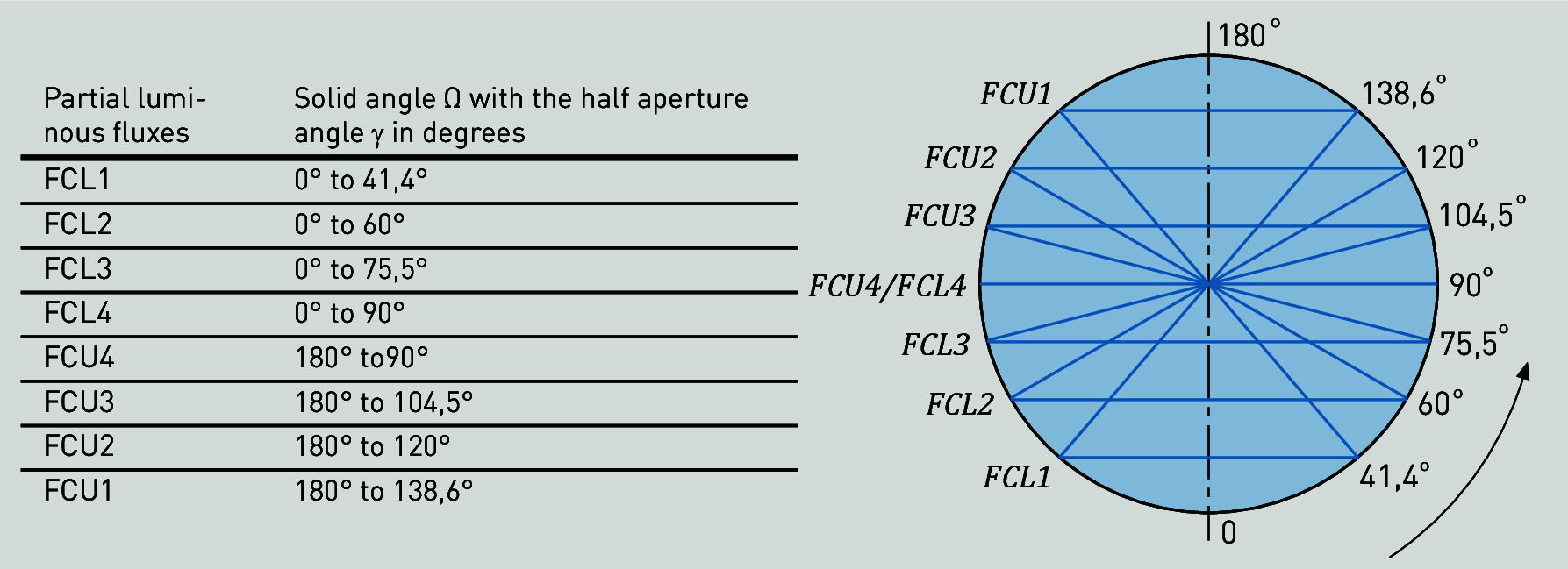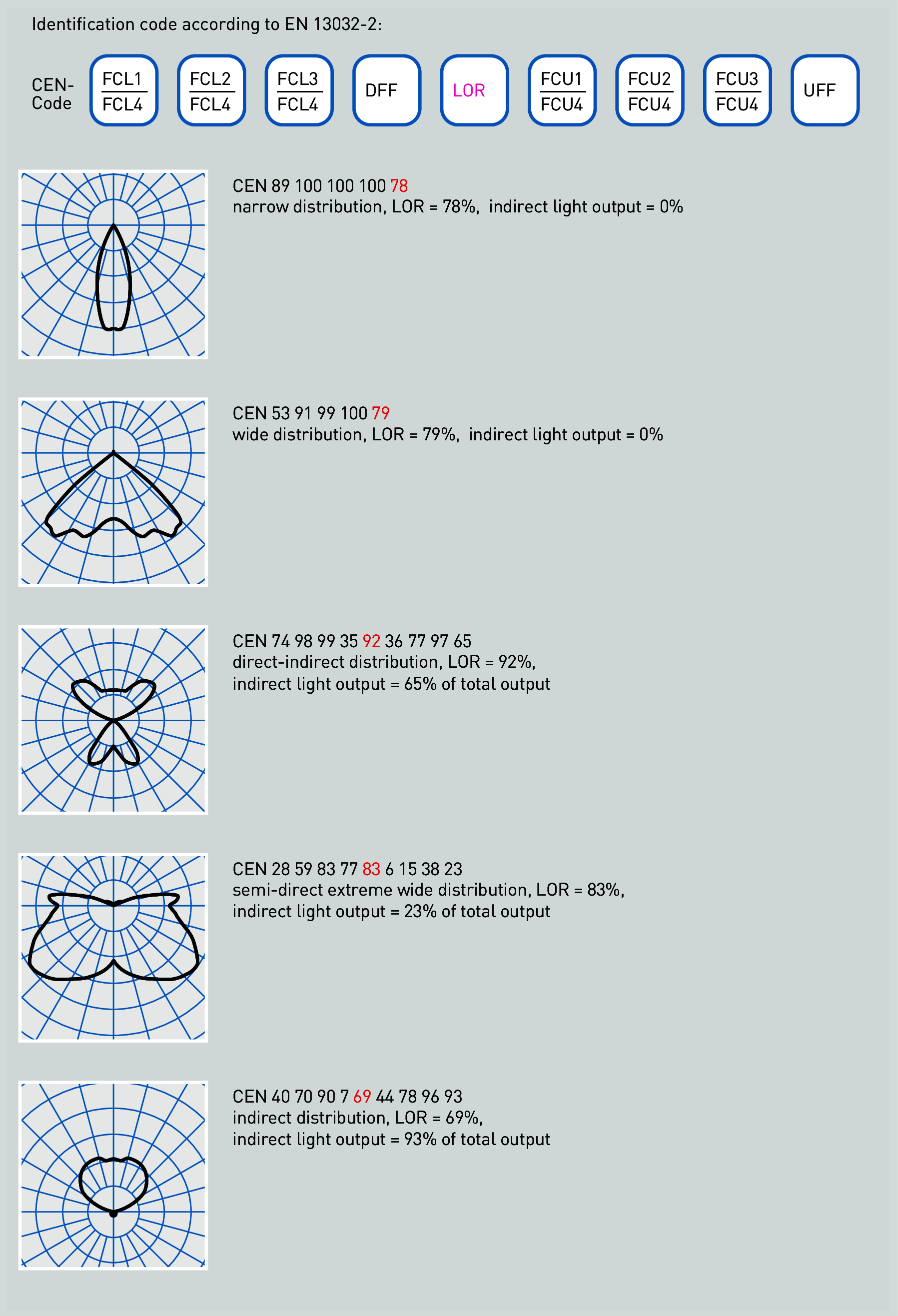The luminaire code according to EN 13032-2 (CEN code) for direct-indirect-distribution luminaires consists of 9 parameters. In contrast to the aforementioned classification according to DIN 5040, these parameters specify the respective luminous flux percentage of the 9 solid angle ranges of the luminous intensity distribution. The basis of this method are the publications CIE no. 40 "Calculations for interior lighting: Basic method" and no. 52 "Calculations for interior lighting: Applied method".
Luminaire classification by EN 13032-2 and CIE 040-1978
To determine the parameters, the luminous flux fractions are captured as depicted in figure and figure.

Figure 3.167: Example for the accumulated luminous flux fractions of a direct-indirect-distribution luminaire according to EN 13032-2. The highlighted vertical lines show the luminous flux accumulated up to the relevant critical angle.

Figure 3.168: Values and depiction of solid angles for determining the accumulated luminous flux fractions of a luminaire according to EN 13032-2
The direct portion is classified by determining the accumulated luminous flux fractions in the following solid angle ranges for the first 3 parameters and to relate them to the luminous flux FCL4 in the lower range of 0° to 90°:
FCL1/FCL4 from 0° to 41.4°
FCL2/FCL4 from 0° to 60° and
FCL3/FCL4 from 0° to 75.5°.
Further parameters are:
DFF (downward flux fraction), determined as the quotient of DLOR (downward light output ratio) and overall LOR (light output ratio): DFF = DLOR/LOR
LOR, the luminaire's light output ratio as a quotient of overall luminous flux and luminous flux of the lamps operated within the luminaire.
Likewise, the standardised luminous intensity distribution (relating to 1,000 lm) is used to determine the accumulated luminous flux fractions in the upper spatial distribution range (figure) and in relation to the luminous flux FCU4 in the upper distribution range of 90° to 180°:
FCU1/FCU4 for the distribution range from 180° to 138.6°,
FCU2/FCU4 from 180° to 120° and
FCU3/FCU4 from 180° to 104.5°.
UFF = ULOR/LOR is the upward flux fraction, determined as the quotient of ULOR (upward light output ratio) and overall light output ratio LOR.
The last 4 parameters are used exclusively for direct-distribution luminaires.
Figure depicts the schema and examples for labelling luminaires according to EN 13032-2.
The classification according to CIE 040-1978 (CIE code) consists of the identical first 5 values which determine the downward luminous flux distribution as well as the relation of direct to indirect luminous flux fraction. In this method, the upper hemisphere is not segmented.

Figure 3.169: Schema (top) and examples (bottom) for labelling the luminous flux distribution of luminaires according to EN 13032-2